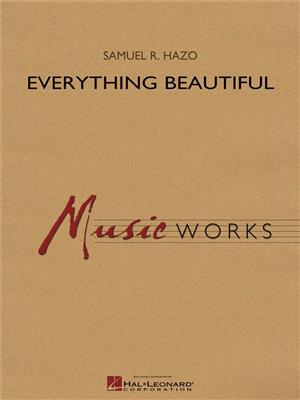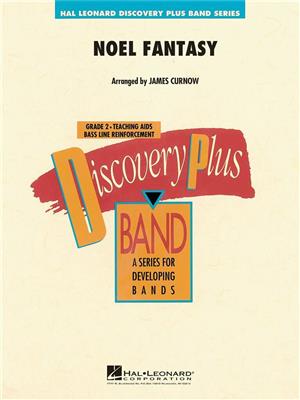Results
-
 £129.99
£129.99Everything Beautiful - Samuel R. Hazo
Premiered by Maestro Eugene Migliaro Corporon conducting the National Honor Band of America, this spectacular memorial for renowned band director Charles Campbell will surround your students and audiences in layers of emotion. Expressive moments upon moments allow the ensemble to follow their musical instincts, gaining an aesthetic reward each time. Typical of performances, the work fades into introspective silence, then is followed by lengthy applause. Available in the original three-movement set, and also just Mvt. 1, The Stillness of Remembering (HL04004298). Dur: 9:00 (Live concert recording by the University of Kentucky Wind Symphony - Dr. John Cody Birdwell, conductor - Samuel R. Hazo, guest conductor) Movements: I. The Stillness of Remembering II. Irish Tune III. While I Think on Thee, Dear Friend
Estimated dispatch 7-14 working days
-
 £53.50
£53.50Noel Fantasy
Here is a joyous celebration of the Christmas season featuring two familiar uptempo carols: the traditional French carol Noel Nouvelet and the 17th-century English carol The First Noel. James Curnow skillfully uses a set ofvariations and contrasting musical styles in weaving both tunes into an appealing and uplifting setting, perfect for any holiday concert.
Estimated dispatch 7-14 working days
-
 £42.50
£42.50Royals - Ella Yelich-O'Connor
Recorded by New Zealand singing sensation Lorde, and winning the 2014 Grammy Award for Song of the Year, this pop hit features a unique and distinctive sound. Effectively set for band, this is sure to be high on your students'request list.
Estimated dispatch 7-14 working days
-
 £184.99
£184.99Nulli Secundus - James Curnow
Commissioned by the Michigan School Band and Orchestra Association, this major work by James Curnow honors the memory and legacy of renowned conductor and educator Harry Begian. In consideration of Dr. Begian's Armenian heritage,Nulli Secundus (second to none) is a suite of three variations based on the Armenian folk song Cilicia (My Homeland). Movements include: I. March Caprice (concert march in fantasy variation form), II. In Memoriam (honoring victimsof the 1915-18 Armenian Genocide), and III. Finale (rapid paced set of variations). Recorded by the Michigan State University Wind Symphony. Dur: 10:00
Estimated dispatch 7-14 working days
-
£78.95
The Ambient Air - Louise Talma
In what The New York Times' Allan Kozinn referred to as, "the hauntingly beautiful Ambient Air ... a set of vivid evocations of nature," Talma wrote four descriptive movements while in relative seclusion at the MacDowell Colony in 1983. Movements includes Echo Chamber, Driving Rain, Creeping Fog, and Shifting Winds. Featured on the Naxos American Classics label recording of the same name, by Ambache Chamber Orchestra and Ensemble. Dur.: 13'30"
Estimated dispatch 7-14 working days
-
£37.95
Hymnsong Variations - Elliot Del Borgo
THE VESPER HYMN is the work upon which this set of variations is based, and the fascinating twisting and turning of the melodic and harmonic material mixes wonderfully with very contemporary rhythmic involvement. Mr. Del Borgo fuses sounds from other generations with those of today. With drive and excitement, this composition flows so comfortably through its tantalizing variants. Powerful! (5:28)
Estimated dispatch 7-14 working days
-
 £48.60
£48.60Marcha por el Funeral del Seor Rana - Leroy Osmon
Marcha por el Funeral del Seor Rana by Leroy Osmon is from a set of Three Marches for Stan Mauldin. Scored for concert band.
Estimated dispatch 7-14 working days
-
 £44.30
£44.30El Mapache - Leroy Osmon
El Mapache by Leroy Osmon is from a set of Three Marches for Stan Mauldin. Scored for concert band.
Estimated dispatch 7-14 working days
-
 £48.60
£48.60Lucha Libre - Leroy Osmon
Lucha Libre by Leroy Osmon is from a set of Three Marches for Stan Mauldin. Scored for concert band.
Estimated dispatch 7-14 working days
-
 £45.99
£45.99Light and Lively - Schaeffer
A contemporary folk-rock original that is well within the playing capabilities of beginning players. Everyone will enjoy this clever selection which can be performed with an optional drum set. A very uptempo and 'feel good' piece and the rewards are tremendous for this grade level.
Estimated dispatch 7-14 working days
